Introduction
The last stanza of Puerto Rico’s national anthem says:
“When Columbus arrived at its beaches,
he exclaimed, filled with admiration
Oh, this is the beautiful land I’ve been searching for.
Borinken is the daughter of the sea and the sun.”
The composer of Puerto Rico’s national anthem got a little carried away and put his words in Colombus’ mouth. There is no historical record of Columbus saying such words. What is a historical fact is that when Christopher Columbus “discovered” Puerto Rico, he came from the East, sailed along the North, and disembarked on the West Coast. Diego Alvarez Chanca, the onboard Doctor, describes the Island’s west coast as one with warm sun, turquoise waters, and clear skies.
I have lived my life on Puerto Rico’s west coast and have helped friends, family, and clients get the most from their visits. As a coastal person, I love the ocean and like to share it with visitors. In this article, I will share with you The 12 Best Things Ocean Lovers Can Do In The West Coast Of Puerto Rico.
We’ll start our journey on the northwest and finish it on the southwest.

Cliffs and Caves near Faro Los Morillos with buried pirate treasure
Table of contents: ()
- 1. Walk The Plank
- 2. Learn To Surf at Jobos Beach.
- 3. Experience the legendary Pozo de Jacinto “Jacinto’s Well Marine Geyser.”
- 4. Take A Hike
- 5. Snorkel With Turtles at Pena Blanca Beach
- 6. Jump Off The Pier At The Historic Crash Boat Beach
- 7. Walk Along The Aguadilla Bay On Paseo Real Marina
- 8. Visit Rincon’s Lighthouse
- 9. Take A Yoga Class in a Marine Reserve
- 10. Visit Faro Los Morillos And See, Where Real pirates of the Caribbean used to sail.
- 11. Get salt from the oldest salt facility in Puerto Rico.
- 12. Play Golf
- Conclusion
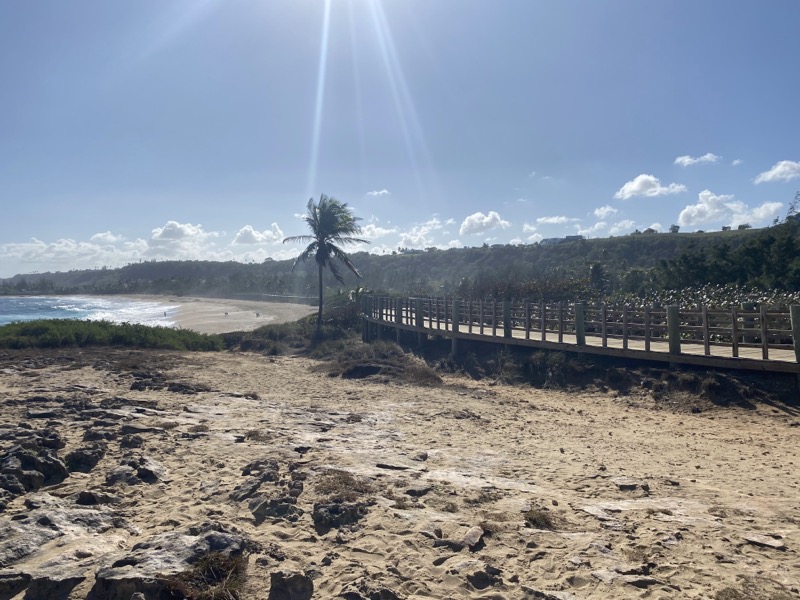
The Isabela Boardwalk
1 Walk The Plank
Isabela is a town northwest of Puerto Rico, about 74 miles west of San Juan. The town is famous for its surfing beaches, historical sites, caves, and sand dunes.
On top of the dunes, the city built a boardwalk. But this is different from your average boardwalk. Isabela’s Boardwalk is an eco-friendly, elevated wooden path covering about 1,000 yards.
Sand Dunes are critical for the environment; they provide natural coastal protection against storms, winds, and high waves. The Dunes prevent and reduce coastal flooding and structural damage. Sea grape (Coccoloba uvifera) protects the dunes, and the city elevated the boardwalk to protect the sea grape trees.
When you walk the wooden path, you can feel the ocean breeze and hear and see the waves of the Atlantic Ocean breaking on the shore. The boardwalk has an observation tower for a better view of the coast.

The Author and his family are ready to surf in Jobos
2 Learn To Surf at Jobos Beach.
Jobos in Isabela is the best beach in Puerto Rico to learn to surf. Rock formations protect the beach from currents, and a sandbank keeps people safe. There are several surf schools in Jobos Beach; Moku Surf School, Aloha Surf School, and Paloma’s Surf School are among the best.
At Jobo’s, you will see children, young adults, and even senior citizens learning to surf. Allow yourself to become a surfer, come to Jobo’s and book a class. You can also rent surfboards at the beach and go on your own, but it is better to go with a professional instructor that knows the rip currents and has formal water rescue training.

Pozo de Jacinto Blowhole
3 Experience the legendary Pozo de Jacinto “Jacinto’s Well Marine Geyser.”
Close to Jobo’s beach, you will find a blow hole or marine geyser. According to the legend, a man named Jacinto owned cattle close to Jobo’s beach. One day one of his cows fell through the blowhole, and Jacinto fell with it while trying to save it. Some say that if you call Jacinto, he will make the waves hit the rocks with fury.
I remember going to “Pozo de Jacinto” as a child and screaming at the top of my lungs: “Jacinto dame la vaca” (Jacinto give me the cow) and seeing the water coming up the blowhole.
When you go to Jacinto’s well, please be aware of your surroundings; there are jagged rocks and strong winds, and falling into the blowhole could result in serious injury.

The Survival Beach Trail
4 Take A Hike
In the town of Aguadilla (2 hours and fifteen minutes west of San Juan), you will find a challenging hike through mountains, white sandy beaches, and boulders standing over 30 feet tall. The hike takes from 30 to 45 minutes each way. You park at Surfer’s Beach and follow the path.
Many people stay at a beach with two giant boulders thinking they have arrived at Survival Beach, but that is Table Rock Beach.
If you decide to hike to Survival beach, wear tennis shoes. The terrain is uneven; there are many roots on the road, and you will be walking alongside mountains. Carry water to stay hydrated.
Survival beach is famous for two things; they filmed a movie based on the novel Lord of the Flies, and the US Air Force used the beach for survival training.
The beach is great for photos, but strong currents and rocks make it unsafe for swimming.
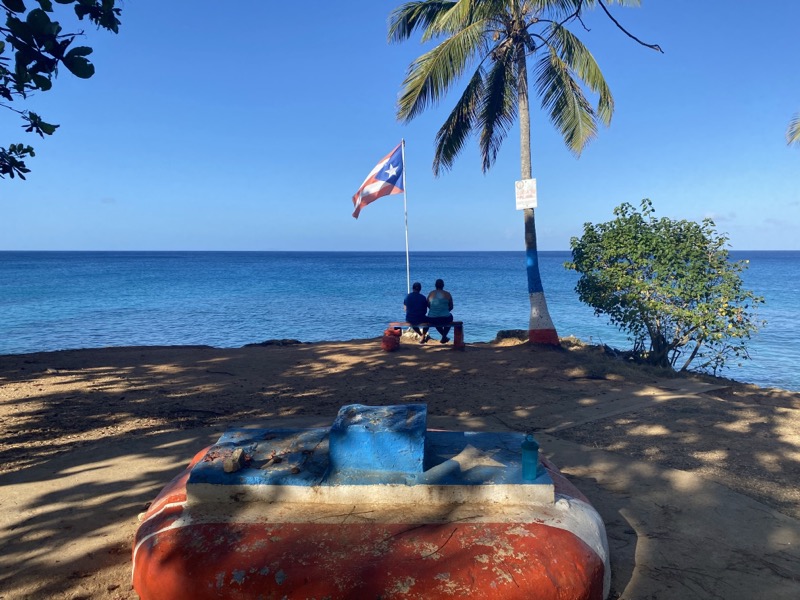
The Wishing Well at Pena Blanca
5 Snorkel With Turtles at Pena Blanca Beach
In Aguadilla, you will find a secluded beach named Pena Blanca. The name comes from the white stones near the beach. There was a freshwater well on the beach, which is why the beach got its secondary name, “Wishing Well.”
Pena Blanca is home to a colony of the hawksbill turtle or Carey as we call it.
You can book snorkel or scuba diving trips to Pena Blanca, where you will find turtles and schools of fish. Black Anchor Scuba Diving and Snorkeling, Aquatica Underwater Adventurers, and Crashboat Watersports are three companies that can offer these trips.
Weekdays are the best days to visit Pena Blanca. On weekends locals flock to the beach (which is relatively small), and it gets crowded.
There is no public parking in Pena Blanca, but houses nearby will allow you to park your vehicle and charge you a small fee.
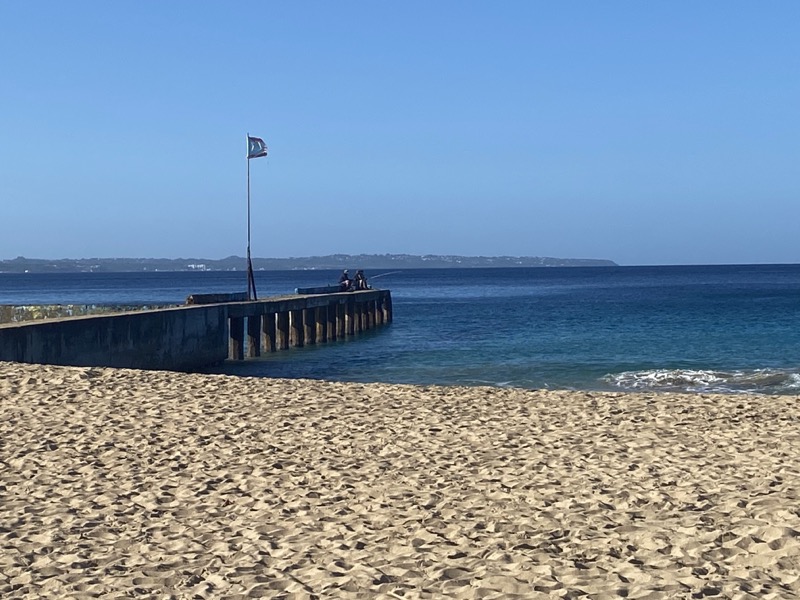
Crash Boat Pier
6 Jump Off The Pier At The Historic Crash Boat Beach
The General Ramey Air Force Base, formerly Borinque US Army Air Field, played an essential role in the Second World War. Bomber planes flew from and to Aguadilla. A Crash Boat Rescue Unit was attached to the base, which gave it its name. They used the pier to bring fuel for the airplanes on the base.
For an adrenaline rush, jump off the pier to the water. That would be a 10 to 15 feet plunge into the water, which is pretty deep (15 to 20 feet) depending on the tide. The water is calm, with no undertow, and is so clear that you can see the bottom.
Crash Boat is one of the top 3 beaches in all of Puerto Rico.

A Brown Pelican at Crash Boat
You will also have the chance to get up close and personal with brown pelicans.
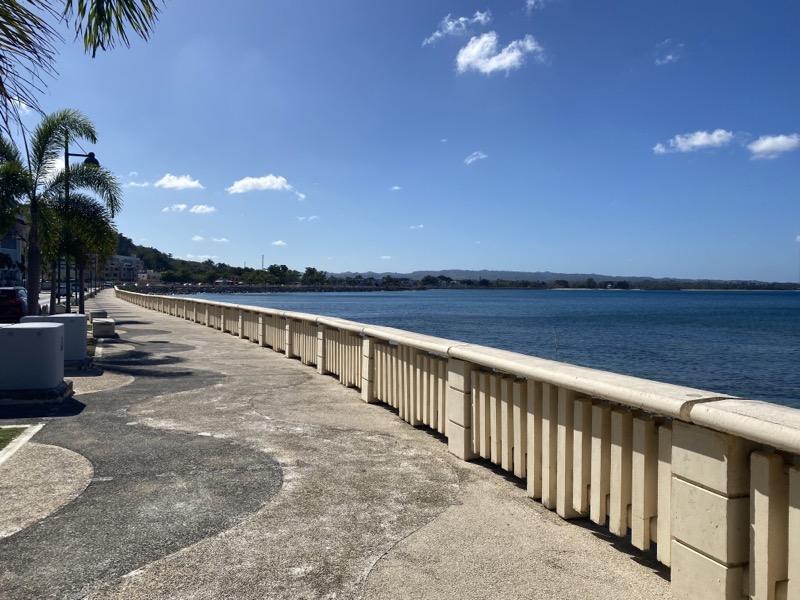
Paseo Real Marina
7 Walk Along The Aguadilla Bay On Paseo Real Marina
A concrete walk with kiosks, restaurants, coffee shops, and artisan shops stretches for almost a mile in Aguadilla Bay. When walking through Paseo Real Marina, you will feel the ocean breeze, hear the waves breaking on the rocks and see the different shades of turquoise in the water.
People go to Paseo Real Marina to exercise in the mornings and afternoons.
If you can, watch the sunset at Paseo Real Marina. The many shades of orange, red, turquoise, and yellow you will see will amaze you.
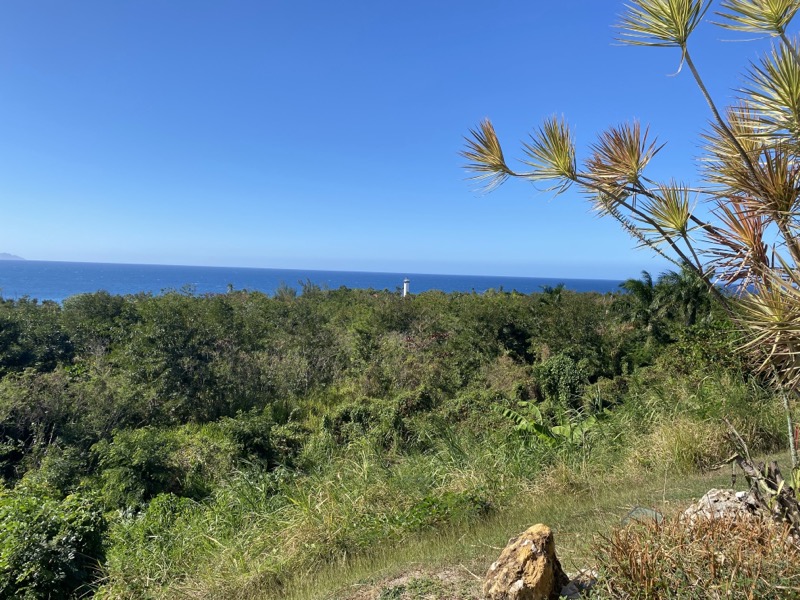
Rincon’s Lighthouse
8 Visit Rincon’s Lighthouse
Rincon is a town 95 miles west of San Juan. They call Rincon the Surf Capital of The Caribbean and the Town of Beautiful Sunsets.
One of Rincon’s best places to watch the sunset is The Lighthouse “El Faro”. Spaniards built the lighthouse in 1892, but the 1918 Earthcuaque destroyed it. The Coast Guard rebuilt it in 1921 and modernized it in 1931. Candles provided light during the lighthouse’s first years. Later they used oil, and in 1959 they started using battery-operated lightbulbs.
Since 1993 The Lighthouse has been a recreational park and ocean museum. It offers a view of Domes Beach, where you can see people surfing, and of The Desecheo, a small uninhabited island nearby.
From mid-January to the end of March, The Rincon Lighthouse is one of the best places to see humpback whales.
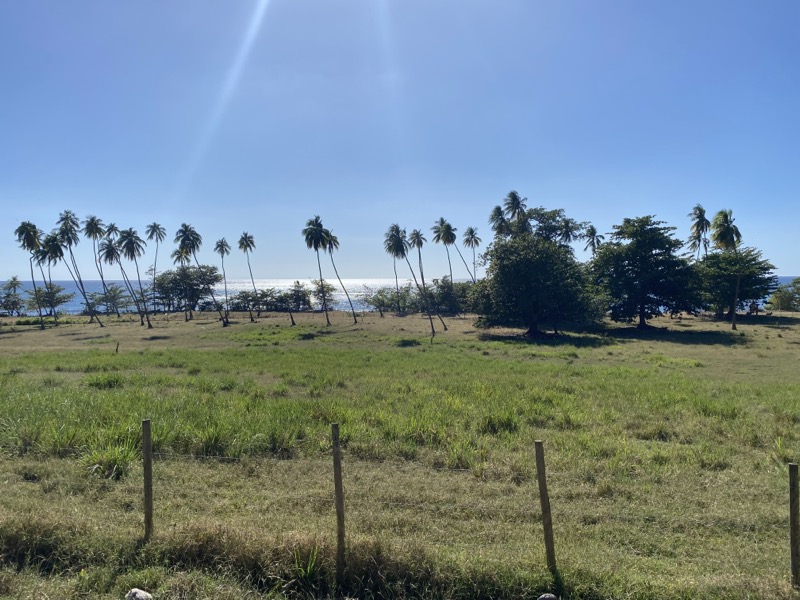
Tres Palmas Marine Reserve
9 Take A Yoga Class in a Marine Reserve
Three small beaches in Rincon: Dogs Man, Little Malibu, and Steps are home to a large diversity of marine life. Elkhorn coral, Parrot Fish, Yellow Tail Snapper, Sergent Major Fish, Surgeon Fish, Hawksbill Turtles, and Spiny Lobster call this place home.
To protect this ecosystem, The Puerto Rico Government, driven by a community effort, legislated to create The Tres Palmas Marine Reserve in 2004. Constructions near the beach are forbidden by law, making the place a sanctuary for marine life and a real treat for ocean lovers.
If you are into Yoga, Barefoot Yoga offers individual and group yoga classes near Tres Palmas Beach. Picture yourself breathing the ocean air, listening to the waves, and watching the sea while doing yoga.
Steps Beach is also an excellent place for snorkeling and scuba diving. Taino Divers in Rincon offers snorkeling and scuba diving tours in Steps Beach.
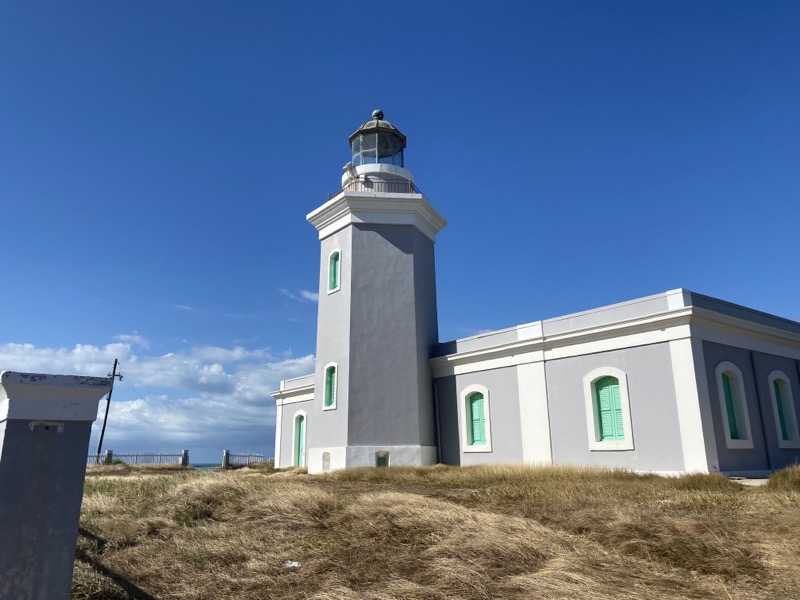
Los Morrillos Lighthouse
10 Visit Faro Los Morillos And See, Where Real pirates of the Caribbean used to sail.
Cabo Rojo is a town at the southwest tip of Puerto Rico, home of the famous Pirate Cofresi. Robert Kupferschein Ramirez de Arellano (June 17, 1791 – March 29, 1825) was the son of an Austrian aristocrat and a wealthy woman of Cabo Rojo. People called him Cofresi because they couldn’t pronounce his Austrian surname.
At first, Kupferschein was a privateer, a pirate licensed by the Spanish Crown to attack enemy ships. But influenced by Simon Bolivar, he started attacking Spanish and United States ships.
He was captured, tried, and executed at El Morro in San Juan.
When you go to Faro Los Morrillos Lighthouse and you stand on the cliff, you will see several caves on the rocks. Legend has it that Pirate Roberto Kupferschein hid treasures inside those caves.
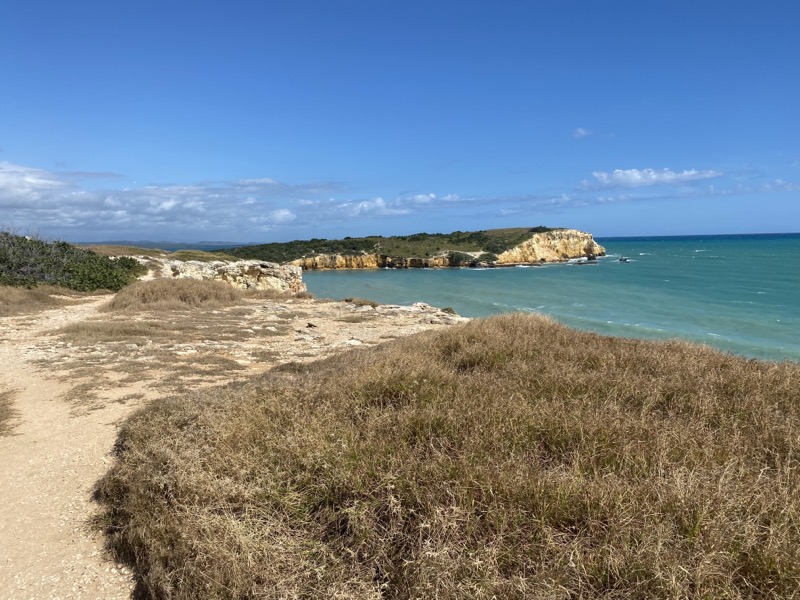
Caves where they say Pirate Cofresi hid his treasures
If you want to go to the lighthouse, be prepared to walk for 30 to 35 minutes each way. Use sunblock and carry plenty of water to stay hydrated. Be careful on the cliff.
You must also know that along the way to the lighthouse, there are plenty of sea salt extraction pools, and that process produces a rotten sulfur egg-like smell.
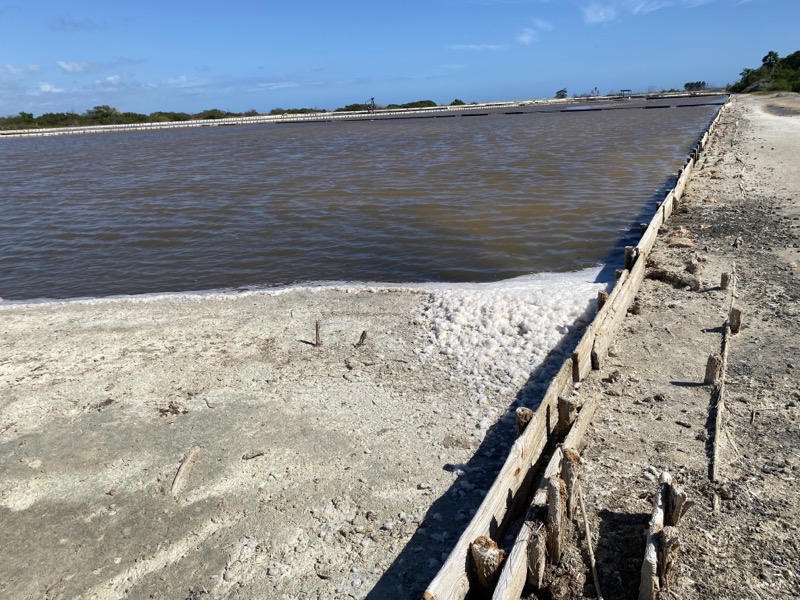
One of the salt flats at Cabo Rojo
11 Get salt from the oldest salt facility in Puerto Rico.
Cabo Rojo is also home to salt flats (salinas) that have been producing sea salt since the time of the Arahuaco Indians by 700 AD. In the early 1500’s Governor Juan Ponce de Leon ordered the commercial exploitation of the salt flats, and they have been producing salt without interruption for over 500 years.
The process of extracting sea salt has stayed the same for centuries. They transfer seawater to large ponds from the nearby lagoon using canals and gates that connect them. The sun evaporates the water, and the salt crystallizes. They collect the salt in mounds and allow it to dry in the open air.
You will see that some of the salt ponds have a distinctive pink color. An alga named Dunaliella salina is responsible for the flat salt’s color and smell.

The author and his family in front of the pink water of a salt flat
You can take a piece of salt crystal as a souvenir.
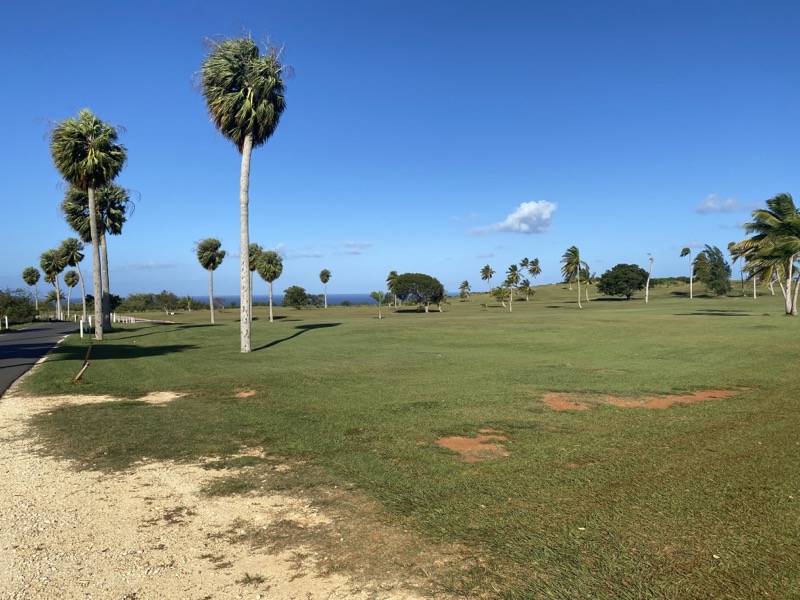
Punta Borinquen Golf Club in Aguadilla
12 Play Golf
There are three golf courses on the west coast of Puerto Rico. You have The Links At Royal Isabela in Isabela, Punta Borinquen Golf Club in Aguadilla, and Club Deportivo de Cabo Rojo in Cabo Rojo. What these three golf courses have in common is that you can see the ocean from each hole. They built the links on cliffs overlooking the Atlantic Ocean and El Pastillo Beach.
Punta Borinquen Golf Course overlooks Las Ruinas and Punta Borinquen Beaches, and Club Deportivo has some of its holes steps from the beach. The ocean breeze becomes your best friend or worst enemy, depending on the hole.
The Punta Borinquen Golf Club was the Island’s first 18-hole golf course. It was frequented by President Eisenhower when Borinquen Air Field (later General Ramey Air Force Base) was operational.
If you are a golfer, you will enjoy these courses. The green fees are less expensive than those in the US mainland.
Conclusion
The Village People popularized a song they named “Go West” in 1979, and almost 20 years later, The Pet Shop Boys reprised it.
Allow me to share some of the lyrics with you.
“Life is peaceful there
(Go West) In the open air
(Go West) Baby, you and me
(Go West) This is our destiny
(Go West) Sun in wintertime
(Go West) We will do just fine
(Go West) Where the skies are blue
(Go West, this is what we’re gonna do).”
So if you ask me, you should do as Christopher Colombus did. Come to the east part of the Island but navigate along the north shore and land on the West Coast. Pristine Beaches, waves, marine life, and unforgettable sunsets await you.
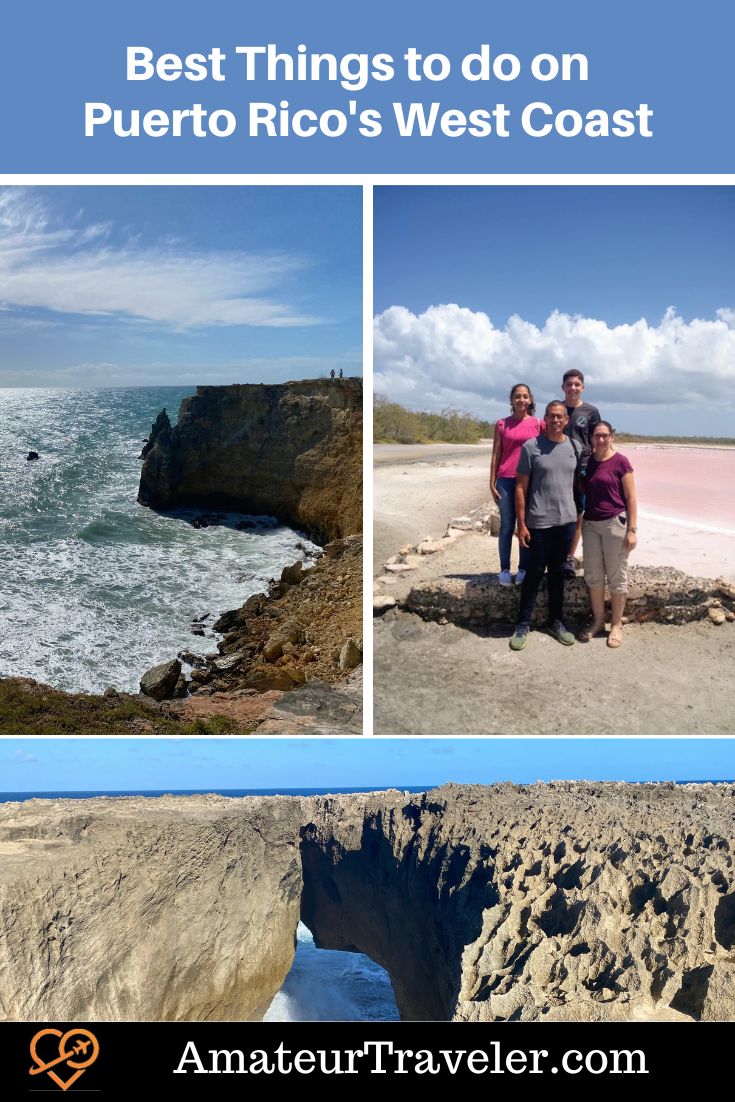
One Response to “12 Best Things To Do On Puerto Rico’s West Coast”
Leave a Reply
Tags: article, puerto rico

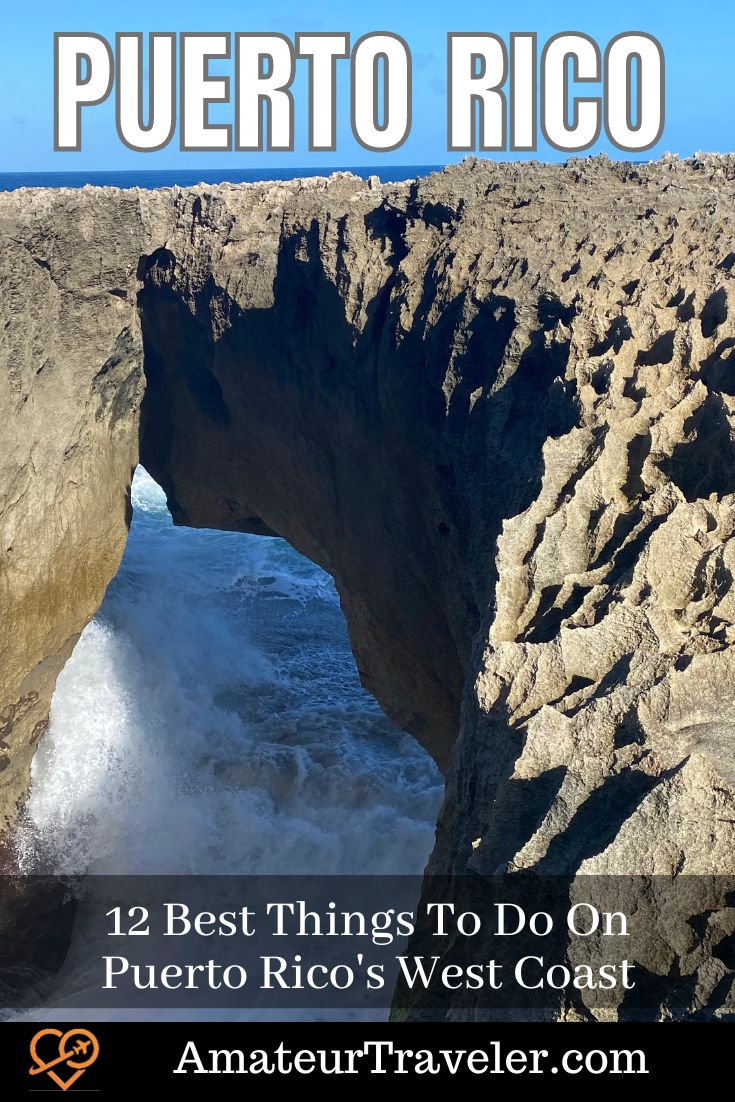
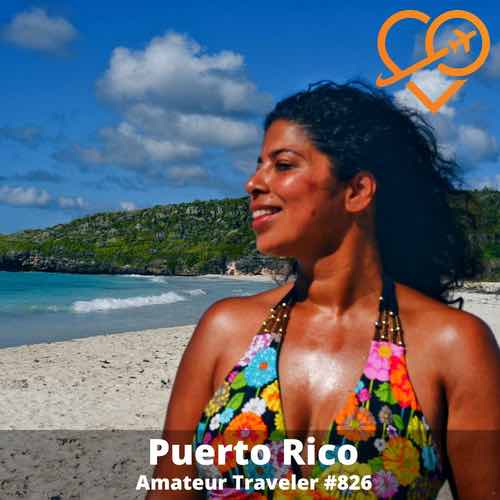 Travel to Puerto Rico – Episode 826
Travel to Puerto Rico – Episode 826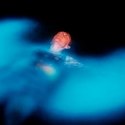 The Magic of Bioluminescent Bay – Vieques, Puerto Rico
The Magic of Bioluminescent Bay – Vieques, Puerto Rico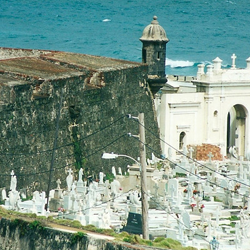 Travel to Puerto Rico – Episode 110
Travel to Puerto Rico – Episode 110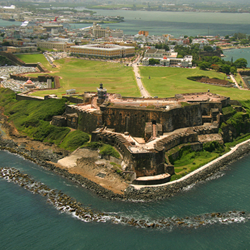 Travel to Puerto Rico – Episode 363
Travel to Puerto Rico – Episode 363

Lib
Says:July 27th, 2024 at 6:35 am
Thank you for mentioning the sulphur egg smell at the salt flats! it should also be mentioned that it may not be pink when visited so tourists beware.
no one else ever mentions the smell and it was so bad when I went, we gad to leave and that smell was in my nose all day.